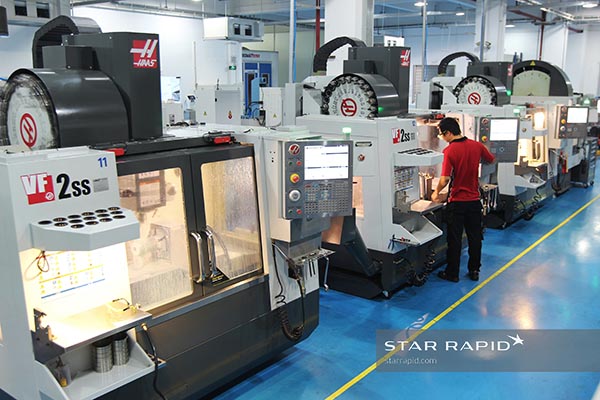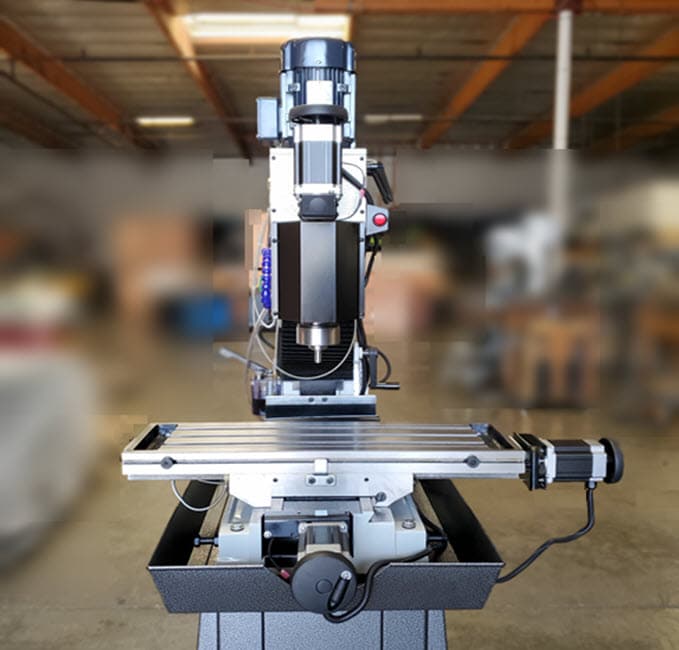If you’re planning to build a CNC mill, one of the most important components to consider is the stepper motor. This motor is responsible for providing precise movements to the mill’s axis, making it a crucial factor in determining the machine’s accuracy and efficiency. However, choosing the right size stepper motor can be overwhelming, especially for beginners who are new to the world of CNC milling.
But don’t worry, we’re here to help! In this article, we’ll guide you through the process of selecting the right size stepper motor for your CNC mill. We’ll cover the basics of stepper motors, how to calculate the required motor torque, and some tips on choosing the best motor for your specific machine. By the end of this article, you’ll have a better understanding of how to choose the perfect stepper motor for your CNC mill project.
The size of the stepper motor for a CNC mill depends on the size of the mill and the types of materials you’ll be cutting. Generally, a larger motor will be required for bigger mills and harder materials. As a rule of thumb, a 1.8-degree motor with at least 125 oz-in of torque is a good choice for most small to medium-sized mills. However, larger mills may require motors with higher torque ratings. It’s always best to consult the manufacturer’s specifications for your specific mill to determine the appropriate motor size.
Choosing the Right Size Stepper Motor for Your CNC Mill
Understanding the Basics of Stepper Motors
Stepper motors are an essential component of any CNC mill machine. These motors convert electrical pulses into precise mechanical movements, allowing the mill to move precisely and accurately. When it comes to choosing the right size stepper motor for your CNC mill, you need to understand the basics of stepper motors.
The size of a stepper motor is measured in torque or holding torque, which is the amount of force the motor can exert without moving. Generally, the higher the holding torque, the larger the motor. However, other factors, such as the lead screw pitch, play a role in determining the size of the stepper motor needed.
Determining the Right Size Stepper Motor for Your CNC Mill
When choosing the right size stepper motor for your CNC mill, you need to consider several factors, including the size and weight of the mill, the type of material being milled, and the desired speed and accuracy of the machine.
To determine the right size stepper motor, you need to calculate the torque required by the mill. This can be done by determining the force required to move the mill and the lead screw pitch. Once you have this information, you can choose a stepper motor with the appropriate torque rating.
It’s important to note that choosing a stepper motor with too low of a torque rating can result in missed steps and inaccurate movements. On the other hand, choosing a motor with too high of a torque rating can result in unnecessary cost and weight.
Benefits of Choosing the Right Size Stepper Motor
Choosing the right size stepper motor for your CNC mill has several benefits. Firstly, it ensures that the mill operates at maximum efficiency and accuracy. A properly sized motor will also last longer and require less maintenance, reducing downtime and costs.
Secondly, choosing the right size stepper motor can improve the quality of the milled product. Accurate movements and precise cuts result in better quality products, improving customer satisfaction and increasing profits.
Stepper Motor Size Comparison Chart
To help you choose the right size stepper motor for your CNC mill, below is a comparison chart of some common stepper motor sizes and their torque ratings:
| Motor Size | Torque Rating |
|---|---|
| NEMA 17 | 30-50 oz-in |
| NEMA 23 | 70-130 oz-in |
| NEMA 34 | 250-700 oz-in |
| NEMA 42 | 900-1500 oz-in |
It’s important to note that these torque ratings are for reference only and may vary depending on the manufacturer and specific application.
NEMA vs. Holding Torque: Which is Better?
When choosing a stepper motor for your CNC mill, you may come across two different ratings: NEMA and holding torque. NEMA refers to the size and mounting dimensions of the motor, while holding torque refers to the amount of force the motor can exert without moving.
While both ratings are important, holding torque should be the primary consideration when choosing a stepper motor for your CNC mill. This is because holding torque directly affects the motor’s ability to move the mill precisely and accurately.
Conclusion
Choosing the right size stepper motor for your CNC mill is crucial for the machine’s efficiency, accuracy, and longevity. By understanding the basics of stepper motors, determining the appropriate torque rating, and considering other factors such as lead screw pitch and material being milled, you can choose the right size stepper motor for your specific application.
Frequently Asked Questions
Here are some common questions and answers about the size of stepper motors for CNC mills.
What size stepper motor do I need for my CNC mill?
The size of stepper motor you need for your CNC mill depends on a few factors, including the size of your mill, the weight of the materials you’ll be cutting, and the speed and accuracy you’re looking for. Generally, larger mills require larger motors, and heavier materials require more torque. You’ll also want to consider the microstepping resolution of the motor, which affects the smoothness of the motion.
It’s best to consult the specifications of your mill and the materials you’ll be cutting to determine the appropriate size of stepper motor. You can also consult with experts in the field or online forums for advice.
What is the difference between a NEMA 17 and NEMA 23 stepper motor?
The main difference between a NEMA 17 and NEMA 23 stepper motor is the size and power. NEMA 23 motors are larger and more powerful, with higher torque and greater speed capabilities. They’re generally used for larger mills and heavier materials, while NEMA 17 motors are smaller and less powerful, and are often used for smaller mills and lighter materials.
However, the specific size and power needed for your CNC mill will depend on the factors mentioned above, and it’s important to choose the right motor for your specific needs.
Can I use a larger stepper motor than recommended for my CNC mill?
While it is possible to use a larger stepper motor than recommended for your CNC mill, it may not always be the best option. Using a larger motor can increase the power and torque, but it can also lead to increased wear and tear on the mill and other components, as well as decreased accuracy and precision.
It’s generally best to stick with the recommended size of stepper motor for your mill, or consult with experts to determine if a larger motor would be appropriate for your specific needs.
What is the maximum torque for a stepper motor?
The maximum torque for a stepper motor depends on several factors, including the size of the motor, the number of steps per revolution, and the current and voltage supplied to the motor. Generally, larger motors and those with more steps per revolution have higher maximum torque.
It’s important to choose a motor with sufficient torque for the materials you’ll be cutting and the speed and accuracy you require. You can also use external drivers or controllers to increase the torque of the motor.
What is microstepping resolution?
Microstepping resolution refers to the number of steps per revolution that a stepper motor can achieve. This affects the smoothness and accuracy of the motion, as well as the noise and vibration of the motor.
Higher microstepping resolutions can result in smoother and more precise motion, but they also require more processing power and can reduce the maximum speed of the motor. It’s important to choose a microstepping resolution that balances the precision and speed needed for your specific application.
In conclusion, choosing the right size stepper motor for your CNC mill is crucial for achieving optimal performance. It is important to consider various factors such as the mill’s size, weight, and the materials you will be working with.
Additionally, selecting a motor with enough torque and step resolution will ensure accurate and efficient milling operations. It is recommended to consult with a professional or refer to manufacturer specifications to determine the appropriate motor size for your specific CNC mill.
Ultimately, investing in a quality stepper motor that meets your mill’s requirements will not only improve its functionality but also increase its lifespan. So take the time to research and select the best motor for your CNC mill to achieve the best possible results.
Request a quote today!
[contact-form-7 id="1578" title="Contact form"]
Please compress the file into a ZIP or RAR file before uploading. Alternatively, send through your RFQ by email.
enquires@unitymanufacture.com





